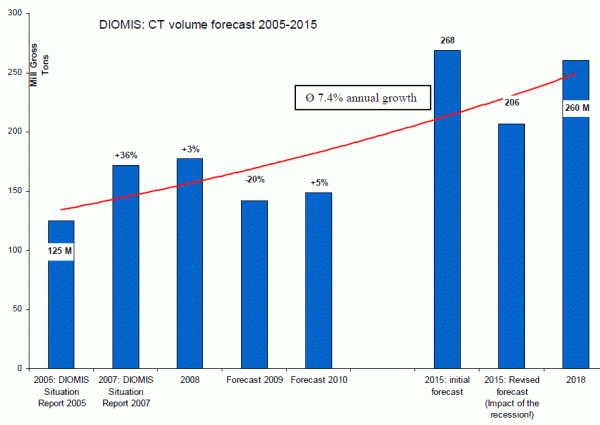Combined Transport Group present the 2010 report on Combined Transport in Europe
Posted: 23 December 2010 | | No comments yet
Report addresses issues such as growth forecasts for domestic and international combined transport, market structures, business models and market shares per traffic segment…
Report addresses issues such as growth forecasts for domestic and international combined transport, market structures, business models and market shares per traffic segment...
The 2010 Report on Combined Transport in Europe has just been published by UIC and its Combined Transport Group. This periodic publication, researched and prepared on behalf of UIC by KombiConsult and K&P Transport Consultants, is the third in the series (previous reports focused on the years 2005 and 2007). It addresses issues such as growth forecasts for domestic and international combined transport, market structures, business models, market shares per traffic segment etc.
It also attempts to quantify combined transport’s contribution to the overall economy. One of the striking findings of the 2010 Report on Combined Transport (with 2009 being the reference year) is that the number of companies offering unaccompanied intermodal services increased by 11% in 2009 compared to 2007. The Report also highlights that the classical business model still prevails with traditional operators carrying approximately 52% of the volumes and serving mainly forwarders and logistic service providers. The development and effects of the global economic crisis on combined transport are described in the Report. In 2009, a total of 154.5 million tonnes of goods were transported in unaccompanied intermodal services. From that total, 55% or 84.5 million tonnes are seaport hinterland traffic and 45% or 70 million tonnes are continental traffic.


The growth witnessed at the end of 2009 and in 2010 seems to indicate that the traffic projections given in the UIC DIOMIS study1 will be met, albeit a couple of years later than initially foreseen.


This puts the question of infrastructure capacity, including terminal capacity, at the heart of the debate on giving rail the means to play a significant part in the modal shift needed to sustain the mobility, environment and competitiveness of the European economy. The 2010 Report on Combined Transport in Europe is available at: www.uic.org/spip.php?article2715.



